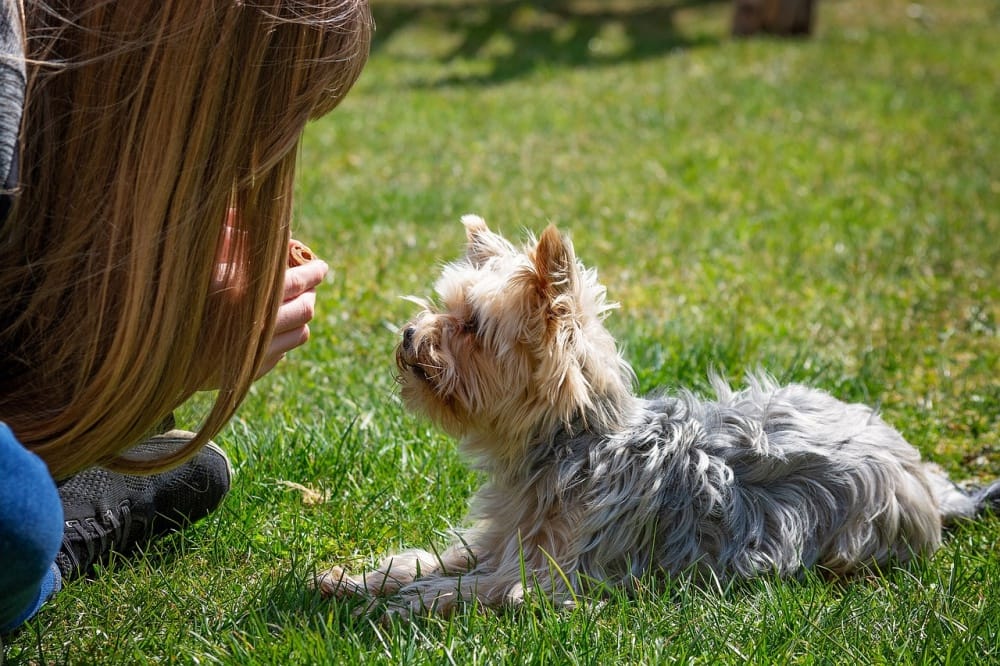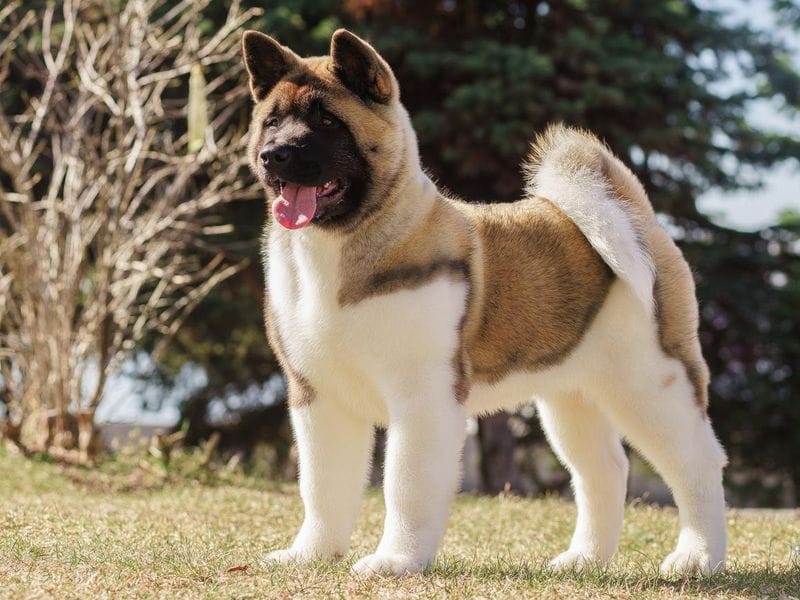When assessing dog behaviors, certain breeds are often recognized for their independence and strong-willed nature, which can sometimes be perceived as a lack of obedience. While obedience in dogs is a desirable trait for many pet owners, some dog breeds have a reputation for being more challenging to train due to their independent personalities, instinctive drives, and predisposition to perform the tasks they were historically bred for. This does not necessarily signify lower intelligence; in fact, these breeds often exhibit high levels of intelligence and problem-solving skills, albeit with a different motivation compared to more compliant breeds.

The degree of obedience in a dog breed can influence training strategies and the overall relationship between pet and owner. Recognized among the least obedient dog breeds are the Afghan Hound, which is known for its dignified aloofness and independent nature, and the Basenji, a breed heralded as being cat-like in temperament, often selective in its response to commands. The Chow Chow, another breed on this list, demonstrates a deep loyalty to its own family but can be reserved and less responsive to training than other breeds.
Understanding the tendencies of these less obedient dog breeds is crucial for setting realistic expectations. Training can be more time-consuming and requires patience, consistency, and understanding of the breed's particular characteristics. An owner willing to adapt their approach and invest in effective training tailored to these breeds can cultivate a strong bond and mutual respect, although the journey to obedience may be longer than with other breeds.

Understanding Obedience in Dogs
Obedience in dogs is a measure of their response to commands and training. It is often mistakenly conflated with intelligence; however, neuropsychological research indicates that obedience can depend on various factors, including breed, individual temperament, and learning history.
Training is critical in developing a dog's obedience. Positive reinforcement, such as treats and praise, is a key principle, rewarding desired behaviors which in turn encourages their repetition. On the other hand, ineffective or inconsistent training can lead to poor obedience.
Here's a brief overview of aspects impacting obedience:
- Training Consistency: Regular practice is essential for command retention.
- Positive Reinforcement: Rewards encourage obedience by creating a positive association with following commands.
- Breed Dispositions: Some breeds are more inclined towards independent thought and may require more patient, persistent training.
- Neuropsychological Factors: Dogs vary in their cognitive abilities, impacting their training responses.
Obedience training often begins with basic commands such as sit, stay, come, and heel. As dogs master these, training can progress to more complex tasks. Each step of obedience training helps in fostering a harmonious relationship between the dog and its owner.
Characteristics of Independent Dog Breeds
Dog breeds known for their independent nature often share similar traits that set them apart from more obedient, people-pleasing canines. These breeds may exhibit strong-willed behaviors and tend to have a higher prey drive due to their historical roles in hunting and working without direct supervision.
Embedded Instincts and Prey Drive
Independent dog breeds often originate from a strong lineage of hunting and working dogs. For instance, terriers like the Scottish Terrier and Welsh Terrier have been bred to hunt vermin such as foxes and rabbits. Their instinctual behaviors are a result of generations of selective breeding for specific traits geared towards autonomy and problem-solving in the wild. Breeds such as the Beagle and Bloodhound are renowned for their scent-tracking abilities, often used historically to trail game like boar. They are equipped with a high prey drive, making them determined when on a scent, which can sometimes be mistaken for stubbornness.
Breeds and Prey Drive:
- Terriers: High (Vermin such as foxes and rabbits)
- Beagle: Very High (Small game)
- Bloodhound: Very High (Tracking larger game)
- Basset Hound: High (Tracking with endurance)
Behavioral Traits
Independence in dogs is often accompanied by certain behavioral characteristics. These breeds may come across as aloof or reserved, and they often require more understanding and patience from their humans. Breeds like the Chow Chow and Afghan Hound are known for their dignified demeanor, which can often border on stubbornness. They are typically less interested in seeking approval or following commands compared to other breeds.
This independence does not negate their ability to be loving and affectionate companions; however, these qualities are usually displayed on their own terms. The key to working with these breeds is acknowledging their intelligence and learning to respect their self-sufficient nature. Training can be more challenging, but with consistent and patient guidance, these breeds can be well-mannered members of the home.
Behavioral Traits in Independent Breeds:
- Mastiff: Stubborn, Intelligent
- Basenji: Independent, Reserved
- Chow Chow: Aloof, Affectionate
- Scottish Terrier: Independent, Loving
The Most Challenging Breeds to Train
Dog training is a task that requires patience and understanding, with some breeds presenting more of a challenge than others. This section explores specific breeds that are known for their stubbornness or independent nature, making them particularly difficult to train.
Small but Mighty Challenges
Chihuahua, Shih Tzu, Dachshund, and King Charles Spaniel exemplify small breeds that often have a stubborn streak. Despite their size, these dogs carry a big personality and can resist obedience:
- Chihuahua: Known for their feisty attitude, they can be difficult to housebreak and may require consistent, firm training.
- Shih Tzu: This breed can be strong-willed, which may make training a test of patience.
- Dachshund: Originally bred for hunting, Dachshunds are tenacious and can be resistant to training.
- King Charles Spaniel: While affectionate, they can be independent, making it hard to hold their attention during training.
Large Breeds with a Mind of Their Own
Large breeds often combine strength with an independent nature, creating unique training challenges. Notable among these are the Mastiff, Great Pyrenees, and Old English Sheepdogs:
- Mastiff: Their sheer size paired with a protective nature can make training a necessity for proper socialization to manage their powerful build.
- Great Pyrenees: Independent and sometimes aloof, they were bred to make decisions on their own, which can clash with training regimens.
- Old English Sheepdogs: While intelligent, their herding instincts can lead to a stubborn temperament, requiring consistent training methods.
The Chow Chow and Bulldog are breeds that further exemplify the training challenges associated with both size and temperament.

- Chow Chow: This breed is not only large but also has an aloof and independent personality that may make training without the right motivation difficult.
- Bulldog (and English Bulldog): Bulldogs can be infamously headstrong, and their laid-back nature often translates to a lack of interest in training.
Training for Hounds and Terriers
Hounds and terriers have a reputation for being difficult to train due to their strong hunting instincts and independent attitudes. Breeds such as the Beagle, Basenji, and Bull Terrier can be especially challenging:
- Beagle: A scent hound who's easily distracted by smells, making them less attentive to commands.
- Basenji: Known as the ""barkless dog"", Basenjis are smart but can be very independent, often doing their own thing.
- Bull Terrier: Known for their energetic nature, Bull Terriers require firm and consistent training to manage their exuberance.
The Afghan Hound, Borzoi, Basset Hound, Bloodhound, and Pekingese all require specific approaches to training due to their breed characteristics.
- Afghan Hound & Borzoi: These sight hounds are independent and can be aloof, preferring to chase moving objects than follow training commands.
- Basset Hound & Bloodhound: Their incredible sense of smell often leads to distraction, which is a hurdle during training sessions.
- Pekingese: They possess a regal demeanor and can be aloof, often indifferent to commands, requiring a trainer's persistence.
Tailoring training methods to each breed's specific needs, understanding their background, and approaching them with patience are key to overcoming these challenges. However, it's important to note that individual variation exists within every breed, and a dog's environment and upbringing can also significantly influence their trainability.
Impact of Breed on Training and Socialization
The influence of a dog's breed on its training and socialization is notable. Certain breeds, recognized by organizations such as the American Kennel Club (AKC), display varying tendencies that can impact their responsiveness to training and their ability to socialize.
Border Collies, for example, are esteemed for their remarkable intelligence and are often considered one of the most trainable breeds. Their patient and friendly disposition is conducive to both training and interaction with others.
On the other hand, breeds like the Siberian Husky pose a challenge due to their independent nature. While intelligent, they can show a stubborn streak that requires a more focused approach to training.
Australian Shepherds are energetic and require extensive socialization to ensure they become well-adjusted adults. Proper training can harness their energy positively, but if neglected, it may lead to undesirable behaviors.
| Breed | Trainability | Socialization Needs |
|---|---|---|
| Border Collies | High intelligence, patient | Friendly, needs engagement |
| Siberian Husky | Independent, can be stubborn | Requires patience |
| Australian Shepherd | Energetic, quick learners | Needs early socialization |
Breeds predisposed to friendliness may require less intensive socialization but still benefit from early exposure to various stimuli. Those with a predisposition for independence may challenge their trainers but can learn to cooperate consistently with a firm and consistent approach. The keys to successful training and socialization lie in acknowledging these breed-specific traits and tailoring the approach to fit the individual dog's needs.
Training Techniques for Stubborn Breeds
Patience is key when training stubborn dog breeds. Handlers should approach obedience training with a calm and consistent demeanor. Training these breeds may require more repetitions and a gradual increase in intensity and complexity of commands. The process should not be rushed.

Exercise and mental stimulation are critical. Stubborn breeds often have high energy levels and need sufficient physical activity. Incorporating agility work helps channel their energy and increases their focus on tasks.
Implement training sessions in a well-fenced-in area or on a leash to prevent distractions and ensure safety. It's important to control the environment to minimize stimuli that may cause disobedience.
| Technique | Description |
|---|---|
| Positive Reinforcement | Reward good behavior with treats, praise, or play to encourage repetition of the desired action. |
| Clear Commands | Use distinct and consistent commands to avoid confusion. Practice one command at a time. |
| Structured Routine | Establish a routine that includes daily training sessions at the same time and place. |
| Short Sessions | Keep training sessions short to maintain the dog's attention and prevent frustration. |
Positive reinforcement should be the cornerstone of training. Rewards make the experience enjoyable, increasing the likelihood of the breed cooperating. Handlers should avoid negative reinforcement as it might reinforce stubborn behavior.
In summary, training stubborn breeds demands tailored strategies. Handlers must be imaginative in engaging the dog through exercise and mental stimulation with an emphasis on patience and consistency.
Exercise and Mental Stimulation
Proper exercise is crucial for dogs, particularly for those breeds known for their high-energy levels. They require regular physical activity to maintain their health and to manage their abundant energy. An active lifestyle helps prevent behavioral issues that can stem from pent-up energy.
Essential Forms of Exercise:
- Daily walks: Keeping dogs on a leash ensures control and safety.
- Running: Ideal for agile breeds capable of extended physical activity.
- Swimming: A well-rounded exercise suitable for dogs with joint concerns.
It's not just muscles that need a workout; mental stimulation plays a vital role in a dog's life. Engaging their minds helps prevent boredom and associated negative behaviors. Intelligent breeds often require more mental exercise to feel satisfied.
Strategies for Mental Engagement:
- Puzzle toys: These challenge a dog's problem-solving skills.
- Obedience training: Incorporates mental tasks with discipline.
- Agility courses: Stimulate both mind and body with complex tasks.
Ensuring a well-fenced-in area is available will offer a safe environment for a dog to exercise both its body and mind freely. Balancing physical activities with mental challenges will help in raising a well-adjusted and happy dog. Regular exercise and mental stimulation are therefore key components in managing the energy and intelligence of less obedient breeds.
Role of Breed in Dog Behavior and Intelligence
Genetic factors significantly influence various aspects of a dog's temperament and cognitive capabilities. Neuropsychological researchers have established that breed plays a pivotal role in shaping a dog's behavior and intelligence. For instance, some breeds are known for their problem-solving skills and quick learning, which are markers of high intelligence.
The Chow Chow and Beagle are often cited as less obedient breeds, which can be attributed to their independent nature rather than a lack of intelligence. Both breeds can exhibit strong-willed tendencies that may impact their responsiveness to traditional training methods. On the other hand, breeds like the Bloodhound and Basenji may present as stubborn or difficult to train, but these characteristics are often deeply rooted in their selective breeding for specific tasks that require independent decision-making.
| Breed | Known Traits |
|---|---|
| Chow Chow | Independent, less responsive to obedience |
| Beagle | Curious, easily distracted, strong sense of smell |
| Bloodhound | Stubborn, scent-oriented, skilled trackers |
| Basenji | Independent, quiet, may resist repetitive tasks |
Dog intelligence is not solely determined by a dog's breed; however, certain dog breeds have been developed over generations to excel in particular skills or roles that may not necessarily align with conventional training and obedience. It should be noted that what is often perceived as a lack of intelligence may in fact be a manifestation of a breed's specialized traits or an indication of a mismatch between the dog's innate abilities and the expectations placed upon them by their human trainers.
Choosing the Right Pet for Your Lifestyle
When selecting a pet, it's crucial to consider your lifestyle and match it with the right animal companion. This consideration ensures a harmonious relationship between pet and owner.
Daily Routine: Individuals with a busy schedule may prefer a low-maintenance pet, like a cat or a small rodent. These animals typically require less attention and can thrive with some independence.
Space Considerations: Those living in apartments might find a smaller, quieter pet to be a more suitable choice. In contrast, a home with a spacious backyard could be ideal for larger, more energetic dog breeds that need room to run.
Social Dynamics: A person who enjoys social gatherings at home should look for pets known for their friendly and affectionate behavior. Breeds that are eager to please tend to blend well in family settings and are adept at interacting with various people.

Activities and Hobbies: Active individuals might want a clever and adaptable pet capable of joining them on outdoor adventures. Dogs with a high energy level and an eagerness for fun and entertaining activities can be ideal.
| Lifestyle Aspect | Pet Characteristics | Suitable Pet Options |
|---|---|---|
| Relaxed | Quiet, low energy | Cats, fish, reptiles |
| Energetic | Active, playful | Sporting dog breeds |
| Social, family-oriented | Affectionate, sociable | Friendly dog breeds |
| Compact living space | Small, independent | Small dogs, cats |
Each breed has its unique traits, and it's essential to research the specific needs and behaviors before making a decision. A pet that fits well with an owner's lifestyle is more likely to result in a fulfilling and long-lasting companionship.
Frequently Asked Questions
Training a dog requires understanding its breed-specific traits. This section provides insights into breeds commonly perceived as challenging to train due to inherent characteristics.
- Q1: Which dog breeds are considered the most challenging to train?
The Afghan Hound, Shih Tzu, Basenji, Bulldog, and Chow Chow are some of the breeds often found difficult to train. Their strong-willed nature can necessitate a more patient and creative training approach.
- Q2: What characteristics typically define less obedient dogs?
Traits such as a high prey drive, independent thinking, and a propensity for distraction are common in less obedient dogs. These characteristics may lead to selective listening and a disregard for commands.
- Q3: Can you identify any breeds known for their stubbornness?
Breeds like the Siberian Husky, Alaskan Malamute, and Jack Russell Terrier are notorious for their stubbornness. This stubborn streak can make it challenging to maintain their focus during training sessions.
- Q4: What are the common traits of the worst behaved small dog breeds?
The worst behaved small dog breeds, such as Dachshunds and Chihuahuas, often display tenacity, a bold personality, and a tendency to resist authority, which can complicate obedience training.
- Q5: How does disobedience manifest in dogs that are labeled 'unaligned' or 'disloyal'?
Dogs considered 'unaligned' or 'disloyal' may ignore commands, exhibit willful independence, or resist training cues, appearing unfocused or indifferent to their owner's instructions.
- Q6: Are certain dog breeds recognized as demonstrably difficult for obedience training?
Yes, the Beagle, Pekingese, and Rottweiler are some breeds known to present challenges during obedience training due to their independent nature or distraction by scents.




